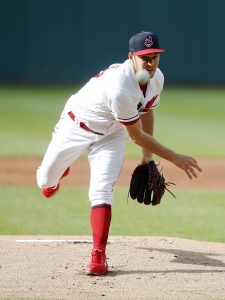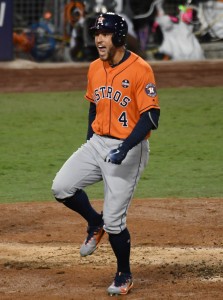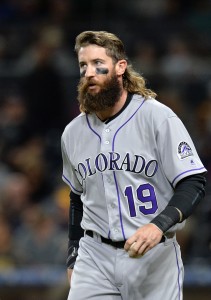Over the last few days, I have been discussing some of the higher profile upcoming arbitration cases. I rely partly on my arbitration model, developed exclusively for MLB Trade Rumors, but will also break out some interesting comparables and determine where the model might be wrong. 2019 arbitration projections are available right here.
Khris Davis enters his third year of arbitration under somewhat familiar conditions—with a .247 average (matching his exact batting average in each season from 2015 through 2017) and at least 40 home runs in his platform season. Coincidences aside, my model sees him getting his biggest raise ever, a $7.6MM bump, good for an $18.1MM salary projection. Last year, he got a $5.5MM raise from his initial $5MM salary in his first year of arbitration.
With career highs of 48 home runs and 123 runs batted in, it is pretty logical that Davis is projected to get his biggest raise yet. On top of that, the same type of performance in the third year of arbitration eligibility is typically associated with a larger raise than it would in the second year of eligibility.
Davis’ case obviously hinges on his power numbers, which is certainly a fortunate skill to possess when it comes to arbitration; power is the skill the arbitration system favors most heavily. Looking for appropriate comparables for Davis is going to require looking for other players who have had significant tallies of the right counting stats, so we should restrict our search to prominent sluggers.
Somewhat surprisingly, in the past decade, only one player has hit 40 home runs going into his third year of arbitration: Todd Frazier, two years ago. Frazier only hit .225 that year and fell just short of 100 RBIs with 98. Davis hit eight more home runs than Frazier did, too. Putting that together, we get an absolute floor of the $3.75MM raise from Frazier’s case.
Even if we soften the home run requirement to 35 and require 100 RBIs, we only get one player in the past five years: Charlie Blackmon, last year. He got a $6.7MM raise for hitting .331 with 37 home runs and 104 runs batted in. There was some debate last year about whether that was enough of a raise, with some rival agents taking shots through the media claiming he should have gotten more. If applied back to Blackmon’s case, the current iteration model does project his 2017 season to support a larger raise of $7.8 million. That also means that the model slightly prefers that season, with its lofty batting average but lesser power stats, to the one just turned in by Davis. All things considered, Blackmon seems like a pretty solid overall comparable, one that either side in the Davis case could argue off of.
It is difficult to come up with other comparables in recent years, but if Davis and the A’s go further back, they might want to look for someone who led the league in home runs like Davis did going into his third year of arbitration. That would be Matt Kemp, who got a $5.05 million raise for his .324/39/126 season in 2011. That is obviously very stale, but it makes it plausible that Davis could get a similar kind of raise with inflation, although his batting average was obviously worse.
With so few plausible comparables, it is difficult to know what Davis could command. In such situations, I would lean towards the model, especially without much evidence that the number was too high or too low. Regardless, in the current era with so many home runs being hit league wide, it will be interesting to see how this affects future cases for guys like Davis who hit so many home runs. Of course, we may not get to see a one-year settlement. The relationship seems to be working for both sides and all involved surely remain mindful of the open market’s devaluation of sluggers, so it would not be surprising to see a multi-year agreement of some kind.




